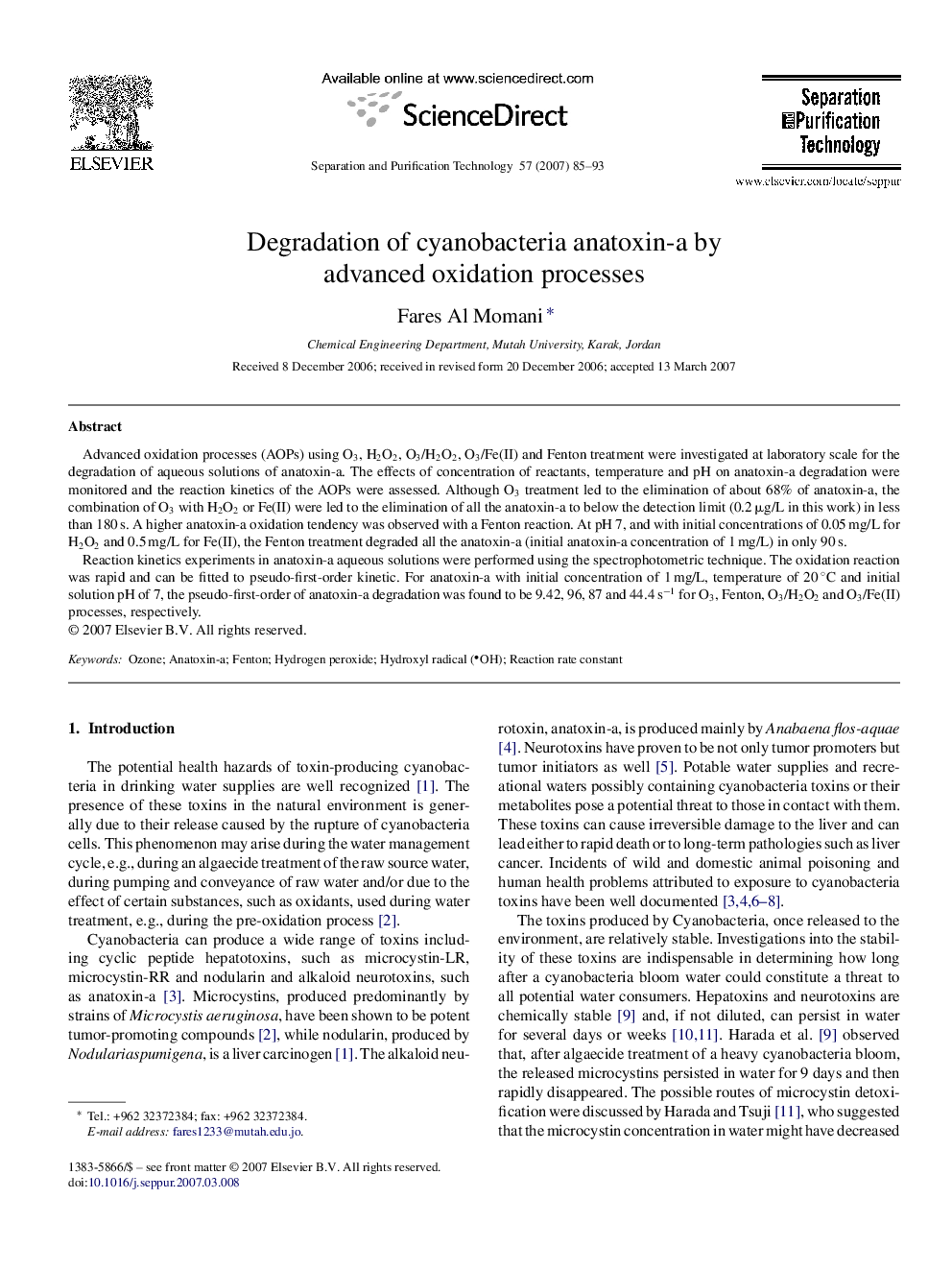| Article ID | Journal | Published Year | Pages | File Type |
|---|---|---|---|---|
| 643906 | Separation and Purification Technology | 2007 | 9 Pages |
Advanced oxidation processes (AOPs) using O3, H2O2, O3/H2O2, O3/Fe(II) and Fenton treatment were investigated at laboratory scale for the degradation of aqueous solutions of anatoxin-a. The effects of concentration of reactants, temperature and pH on anatoxin-a degradation were monitored and the reaction kinetics of the AOPs were assessed. Although O3 treatment led to the elimination of about 68% of anatoxin-a, the combination of O3 with H2O2 or Fe(II) were led to the elimination of all the anatoxin-a to below the detection limit (0.2 μg/L in this work) in less than 180 s. A higher anatoxin-a oxidation tendency was observed with a Fenton reaction. At pH 7, and with initial concentrations of 0.05 mg/L for H2O2 and 0.5 mg/L for Fe(II), the Fenton treatment degraded all the anatoxin-a (initial anatoxin-a concentration of 1 mg/L) in only 90 s.Reaction kinetics experiments in anatoxin-a aqueous solutions were performed using the spectrophotometric technique. The oxidation reaction was rapid and can be fitted to pseudo-first-order kinetic. For anatoxin-a with initial concentration of 1 mg/L, temperature of 20 °C and initial solution pH of 7, the pseudo-first-order of anatoxin-a degradation was found to be 9.42, 96, 87 and 44.4 s−1 for O3, Fenton, O3/H2O2 and O3/Fe(II) processes, respectively.
